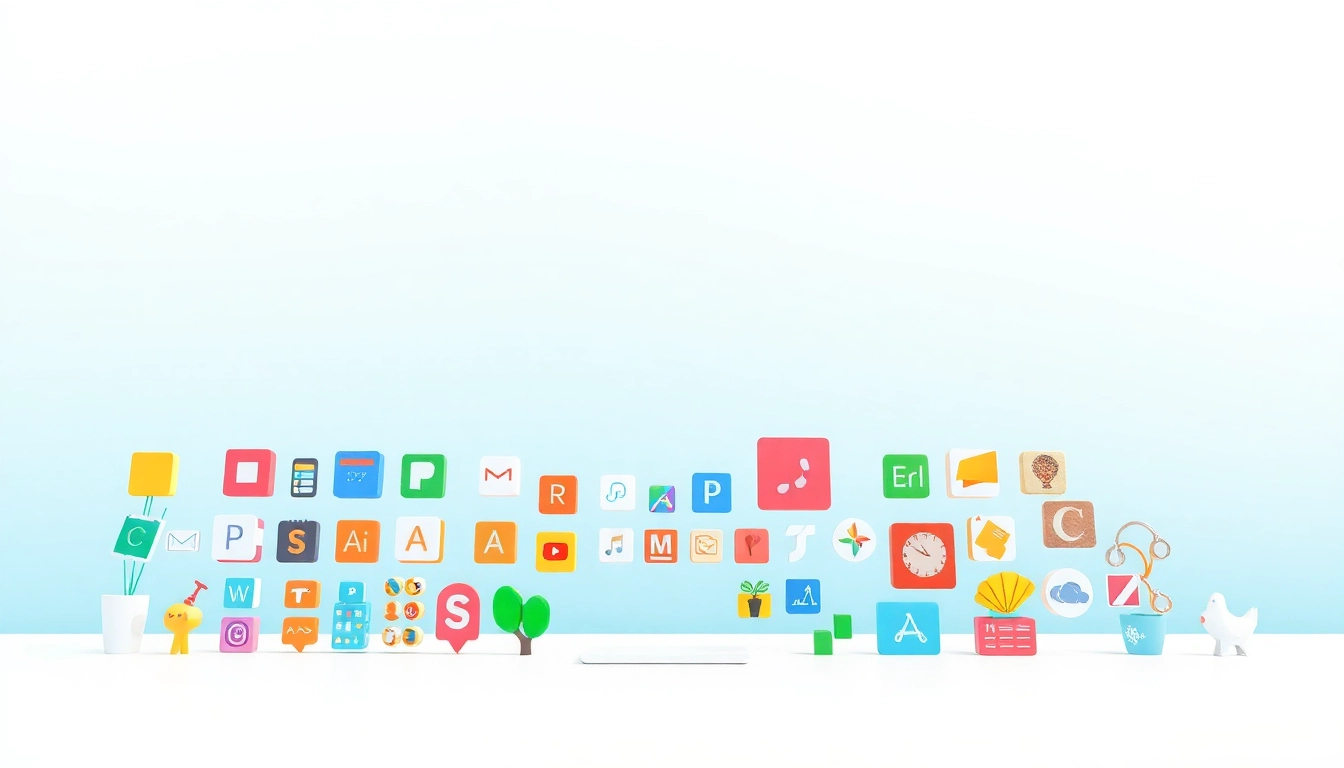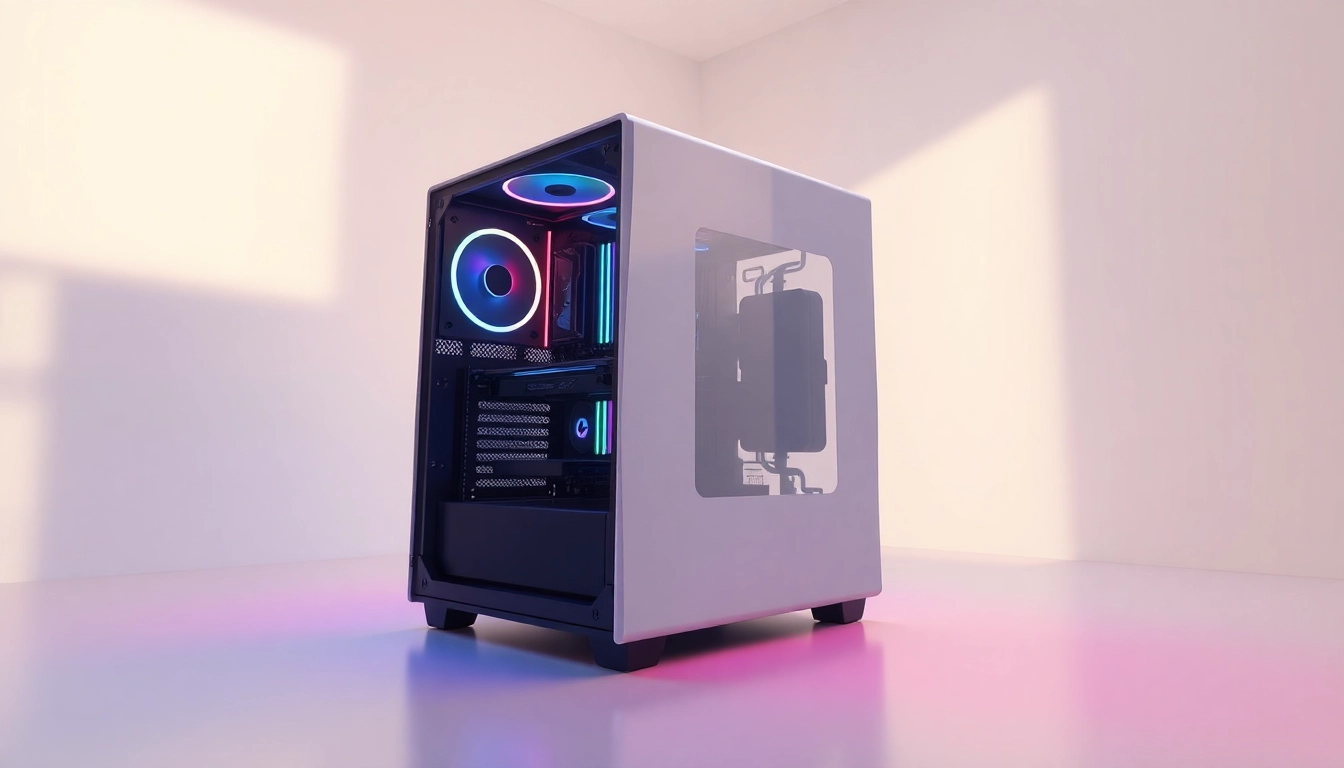Understanding Icons and Their Importance
Definition of Icons
Icons are visual representations or symbols that convey meaning visually. They serve as a shorthand for complex ideas, concepts, or actions, making them essential in digital interfaces. An icon can take various forms, ranging from simple graphic images to more intricate illustrations and animations, providing a glimpse of functionality at a glance.
Role of Icons in User Interface Design
In user interface (UI) design, icons play a critical role in guiding users through applications and websites. They enhance navigation, provide context, and can convey functionality without the need for text. For instance, a trash can icon universally indicates the “delete” function, enabling users to interact with systems more intuitively. The proper use of icons can significantly reduce cognitive load, streamline user experience, and increase engagement.
Psychological Impact of Icons on Users
Icons possess a powerful psychological effect on users. They can evoke emotions, signal actions, and provide immediate clarity. A well-designed icon not only aids in faster understanding but also enhances the visual aesthetic of the platform. Research shows that users have a preference for visual information over textual content, highlighting the importance of thoughtfully designed icons. Moreover, effective iconography helps build trust and familiarity among users, contributing to a more pleasant interaction with the digital environment.
Types of Icons in Modern Design
Flat vs. 3D Icons
Modern design often features two distinct styles of icons: flat and 3D. Flat icons prioritize simplicity and minimalism, typically using solid colors and basic shapes without gradient or depth. This style is popular for its clarity and ease of recognition. Conversely, 3D icons employ shadows, highlights, and gradients to create a sense of depth and realism. Each style has its advantages, and the choice depends on factors such as the target audience, platform, and overall design theme.
Custom vs. Standard Icons
Custom icons are tailored specifically for a brand or project, enhancing its identity and uniqueness. They can be designed to represent specific brand values or themes and provide a differentiated user experience. Standard icons, on the other hand, are pre-designed and widely recognized by users, making them versatile and easy to implement without additional design efforts. The selection between these types often rests on the balance between brand identity and user familiarity.
Icon Fonts and Graphic Formats
Icons can be delivered in various formats, including icon fonts and graphic files. Icon fonts are vector-based and scalable, allowing for easy customization in size and color. This format offers the advantage of being lightweight and versatile for web use. Graphic files, such as PNG, SVG, and EPS, are also commonly used. SVG files, in particular, provide flexibility for responsive designs as they can scale without loss of quality. Each format has its own merits, often determined by the project requirements and design goals.
Best Practices for Using Icons
Designing User-Friendly Icons
User-friendly icons communicate usability and functionality. Effective icon design should prioritize recognizability, consistency, and responsiveness. Employing clear imagery that aligns with common user expectations can significantly enhance usability. Testing icons for recognition across diverse user groups helps refine designs and verify effectiveness. Additionally, providing alternate text descriptions can contribute to a better experience for users relying on assistive technologies.
Accessibility Considerations for Icons
Icons should be designed with accessibility in mind. This includes considering color contrasts, use of space, and simplicity. Providing alternatives to visual elements, such as using descriptive text or tooltips, is essential for users with visual impairments. It’s crucial to follow accessibility standards, ensuring that all users can navigate interfaces with ease and efficiency. Consistent design and recognizable symbols contribute to an inclusive digital environment.
Consistency Across Platforms
Maintaining consistency in icon design across various platforms enhances user experience by promoting familiarity. When users recognize icons from one platform to another, their learning curve is shortened. Consistent use of terminology, color schemes, and icon styles is vital for effective cross-platform design. Utilizing a cohesive iconography system ensures that users can navigate seamlessly, regardless of the device or medium they are using.
Tools and Resources for Creating Icons
Icon Design Software Overview
Creating icons requires robust design software equipped with the necessary tools for vector illustrations. Programs such as Adobe Illustrator, Sketch, and Figma allow designers to craft scalable, high-quality icons. These tools often integrate features like grids, alignment tools, and color palettes, facilitating efficiency in designing and iterating icons. Understanding the full capabilities of these tools can dramatically improve the design workflow.
Free Icon Resources Online
Numerous online platforms provide free resources for designers seeking icons. Websites such as Icons, offer vast collections of icons in various formats and styles, making it easy to find the right match for any project. These resources are invaluable for designers working within tight budgets or those looking for inspiration and starting points in their designs.
Collaborating with Designers for Custom Icons
For specific branding needs, collaborating with professional designers can yield personalized icons tailored to a project’s goals. Working with skilled designers enables teams to develop a unique visual language that resonates with the intended audience. Clear communication regarding design expectations, usability, and brand representation will ensure successful collaboration, ultimately producing icons that enhance the user experience and reflect brand identity.
Future Trends in Icon Usage
Advancements in Icon Design Technologies
The future of icon design is poised for significant advancements driven by technology. With the rise of 3D modeling software and animation tools, designers can create more dynamic and interactive icons. The use of AI in design processes will also streamline workflows, allowing for personalized icon recommendations based on user behavior and preferences. As technology continues to evolve, icons will become increasingly sophisticated in delivering functionality and aesthetics.
The Rise of Animated Icons
Animated icons have become an emerging trend, providing public interfaces with added layers of engagement and interactivity. These moving elements can guide user actions, attract attention to desired areas, or create delightful user experiences. The careful implementation of animations can enhance the storytelling aspects of a design, while ensuring they do not overwhelm or distract users. Balancing subtle movements with functionality will be key to their success.
Predictions for Icon Utility in Emerging Digital Experiences
As digital experiences continue to evolve rapidly, the utility of icons is expected to expand significantly. With increasing reliance on mobile devices and wearables, icons will play an even more crucial role in streamlining interactions. Emerging technologies, such as virtual reality (VR) and augmented reality (AR), will redefine how icons are conceptualized and utilized in immersive environments. In such contexts, the design of icons will need to reflect spatial interactions, user dynamics, and intuitive usability.



